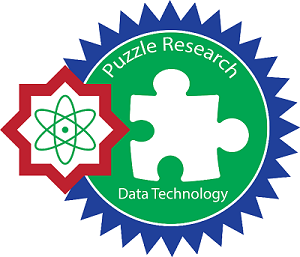ADDITIONAL MENU
Frameworks Comparative Study of Classification Models Based on Variable Extraction Model for Status Classify of Contraception Method in Fertile Age Couples in Indonesia
Abstract
In terms of minimizing the risk of death in mothers the use of contraceptive methods really needs to be improved and the success of the use of contraceptive methods. This study aims to compare several popular classification models used to classify the status of the use of contraceptive methods in fertile age couples in Indonesia so that they can be used and the implementation of policies that are more impartial using the variable extraction integration method. The proposed model in this study is a comparative study of classification models include Logistic Regression (LR), k-Nearest Neighbor (k-NN), Naïve Bayes (NB), C4.5, and CART. For the purpose of testing the model, Accuracy, AUC, F-measure, Sensitivity (SN), Specificity (SP), Positive Predictive Value (PPV), and Negative Predictive Value (NPV) are used to test frameworks comparative study of classification models. Based on the experimental results, RL shows superior and stable performance compared to other methods. It can be concluded, the RL method is the right choice method to classify the status of use of contraceptive methods in couples of childbearing ages in Indonesia.
Full Text:
PDFReferences
C. C. Aggarwal, Data Mining: The Textbook. new york: Springer Berlin Heidelberg, 2015.
L. Khikmah, H. Wijayanto, and U. D. Syafitri, “Modeling Governance KB with CATPCA to Overcome Multicollinearity in the Logistic Regression Modeling,” 2017.
P. Hariyani, C. Dewi, B. Notobroto, and D. Biostatistika, “Rendahnya Keikutsertaan Pengguna Metode Kontrasepsi Jangka Panjang Pada Pasangan Usia Subur,” Biometrika dan Kependud., vol. 3, no. 1, pp. 66–72, 2015.
R. Septalia and N. Puspitasari, “Faktor yang Memengaruhi Pemilihan Metode Kontrasepsi,” pp. 91–98.
J. A. Vallejos and S. D. McKinnon, “Logistic regression and neural network classification of seismic records,” Int. J. Rock Mech. Min. Sci., vol. 62, pp. 86–95, 2013.
A. Agresti, Categorical Data Analysis - 2nd Ed., vol. 13. 2002.
B. Lantz, Machine Learning with R. Birmingham: Packt Publishing Ltd, 2013.
A. A. Aburomman and M. Bin Ibne Reaz, “A novel SVM-kNN-PSO ensemble method for intrusion detection system,” Appl. Soft Comput. J., vol. 38, pp. 360–372, 2016.
J. Suntoro, F. Wahyu, and H. Indriyawati, “Software Defect Prediction Using AWEIG + ADACOST Bayesian Algorithm for Handling High Dimensional Data and Class Imbalanced Problem,” Int. J. Inf. Technol. Bus., vol. 1, no. 1, pp. 36–41, 2018.
Han and Kamber, Data Mining Concepts and Techniques Third Edition, vol. 1. 2012.
M. Kantardzic, Data Mining : Concepts, Models, Methods, and Algorithms, Second Edi. Canada: A John Willey & Sons, Inc., Publication, 2011.
D. Ryu and J. Baik, “Effective multi-objective naïve Bayes learning for cross-project defect prediction,” Appl. Soft Comput. J., vol. 49, pp. 1062–1077, 2016.
R. Kosfeld and J. Lauridsen, “Factor analysis regression,” Stat. Pap., vol. 49, no. 4, pp. 653–667, 2008.
A. Ilham, L. Khikmah, A. Qahslim, I. B. A. Indra Iswara, F. E. Laumal, and R. Rahim, “A systematic literature review on attribute independent assumption of Naive Bayes: research trend, datasets, methods and frameworks,” IOP Conf. Ser. Mater. Sci. Eng., vol. 420, p. 012086, Oct. 2018.
I. H. Witten, E. Frank, and M. A. Hall, Data Mining Third Edition. MK Morgan Kaufman, 2011.
S. Lessmann, B. Baesens, C. Mues, and S. Pietsch, “Benchmarking Classification Models for Software Defect Prediction: A Proposed Framework and Novel Findings,” IEEE Trans. Softw. Eng., vol. 34, no. 4, pp. 485–496, Jul. 2008.
F. Gorunescu, Data Mining: Concepts,Models and Techniques. Springer Berlin Heidelberg, 2011.
I. H. Witten, E. Frank, M. A. Hall, and C. J. Pal, Data Mining: Practical Machine Learning Tools and Techniques, Four. Morgan Kauvmann, 2016.
R. S. Wahono and N. S. Herman, “Genetic Feature Selection for Software Defect Prediction,” Adv. Sci. Lett., vol. 20, no. 1, pp. 239–244, Jan. 2014.
DOI: http://dx.doi.org/10.24014/ijaidm.v2i1.7568
Refbacks
- There are currently no refbacks.
Office and Secretariat:
Big Data Research Centre
Puzzle Research Data Technology (Predatech)
Laboratory Building 1st Floor of Faculty of Science and Technology
UIN Sultan Syarif Kasim Riau
Jl. HR. Soebrantas KM. 18.5 No. 155 Pekanbaru Riau – 28293
Website: http://predatech.uin-suska.ac.id/ijaidm
Email: ijaidm@uin-suska.ac.id
e-Journal: http://ejournal.uin-suska.ac.id/index.php/ijaidm
Phone: 085275359942
Journal Indexing:
Google Scholar | ROAD | PKP Index | BASE | ESJI | General Impact Factor | Garuda | Moraref | One Search | Cite Factor | Crossref | WorldCat | Neliti | SINTA | Dimensions | ICI Index Copernicus
IJAIDM Stats










